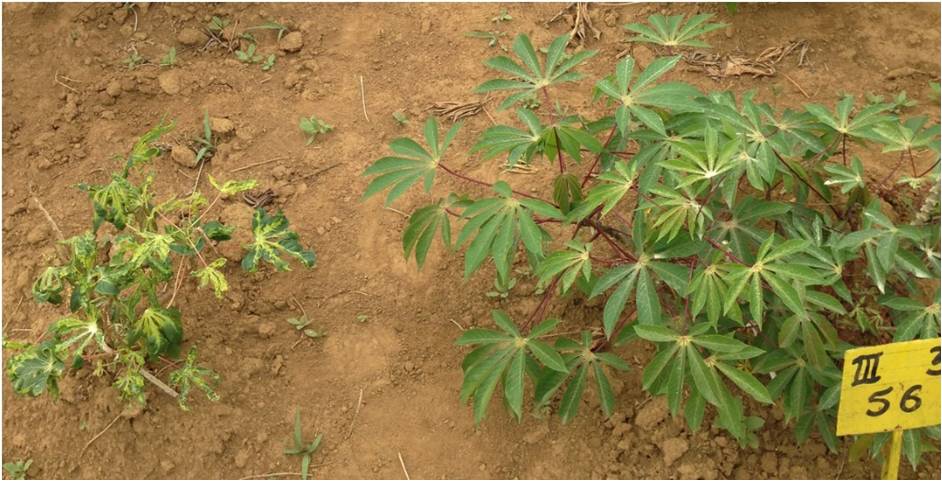
Scientists Discover the Gene for Cassava Mosaic Disease Resistance
July 13, 2022| |
A research team led by Prof. Wilhelm Gruissem at ETH Zurich, together with collaborators in the U.S. and Uganda, has now identified the gene encoding DNA polymerase δ (POLD1) as the cause of cassava mosaic disease (CMD2) resistance. The POLD1 enzyme is required for the multiplication of geminiviruses that cause CMD in cassava.
Cassava is a vital staple root crop, with almost a billion people worldwide depending on it for food and raw materials. In Africa, cassava is a major source of livelihood for smallholder farmers and important for food security because it can grow without fertilizer in dry conditions. However, cassava farming is constrained by weeds, pests, and viral diseases. Cassava mosaic disease (CMD) caused by cassava mosaic geminiviruses has impacted cassava production in Africa and India, and more recently in Southeast Asia, causing significant yield losses.
There are currently three known resistances to cassava mosaic geminiviruses (CMD1, CMD2, and CMD3). CMD2-associated resistance was originally discovered in cassava TME (Tropical Manihot esculenta) landraces collected by smallholder farmers in West Africa. These TME landraces can recover from CMD infections. Though breeders favor CMD2 resistance in cassava breeding programs, the resistance is easily lost when TME cassava plants are regenerated from tissue culture.
“We discovered that the POLD1 gene has mutations which could explain CMD2 resistance. These mutations change amino acids that most likely reduce the proofreading accuracy of the enzyme, which is necessary for the correct replication of DNA,” explains Dr. Gruissem. The ETH team performed whole genome sequencing and genetic variant analysis with many CMD resistant and susceptible cassava cultivars to identify the genetic basis of rare diseases in humans. It also successfully revealed the mutations in cassava POLD1.
For more details, download and read the open-access paper in Nature Communications.
| |
You might also like:
- Insights on Flowering from Two Studies Could Boost Cassava Production
- Scientists Develop Dual Disease Resistant Cassava
- Improved Cassava Varieties to Ease Hunger in Africa
Biotech Updates is a weekly newsletter of ISAAA, a not-for-profit organization. It is distributed for free to over 22,000 subscribers worldwide to inform them about the key developments in biosciences, especially in biotechnology. Your support will help us in our mission to feed the world with knowledge. You can help by donating as little as $10.
-
See more articles:
-
News from Around the World
- WEF Puts a Spotlight on Genetic Engineering to Combat Climate Change
- Senegal President Signs New and Improved Biosafety Law
- Research Team Discovers Genetic Mutations that Made Rice Cultivation Possible
- Economists Analyze China's GE Crop Commercialization Dilemma
- Workshop to Explore Policy Considerations for Gene Editing in Asia and Australia
- Italian Lawmakers Support GM Crops to Fight Climate Change
- Scientists Discover the Gene for Cassava Mosaic Disease Resistance
- Research Reveals Lack of Consumer Awareness about the Contributions of Science in Food and Agri
- Study by International Experts Shows Global Wheat Production Can Be Doubled
-
Research Highlights
- Research Reveals the Light Mechanism that Regulates Rice Flowering Time
- Experts Analyze Trends in Rice Research
- Bioengeered Bacteria Produces Renewable Fuel to Rival Rocket Fuel
-
Read the latest: - Biotech Updates (December 17, 2025)
- Gene Editing Supplement (December 17, 2025)
- Gene Drive Supplement (February 22, 2023)
-
Subscribe to BU: - Share
- Tweet

